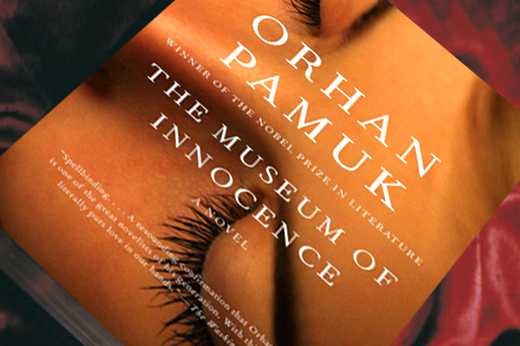By Cory Ruf
The Museum of Innocence
By Orhan Pamuk
(Vintage) $21

In 2006, the Swedish Academy awarded Istanbul-born novelist Orhan Pamuk the Nobel Prize in literature for his career-long “quest for the melancholic soul of his native city.” In his latest outing, 2008’s The Museum of Innocence, he continues that quest, depicting 1970s Istanbul, the setting of his young adulthood.
The book’s narrator, Kemal, is set to be engaged to Sibel, a sociable, educated woman with a well-connected family. The couple belongs to a secular class of young professionals who inhabit Nişantaşı, Istanbul’s equivalent to a tony Paris arrondissement. Seemingly oblivious to the poverty and strife writhing in other parts of the city, Kemal and his friends wear haute western clothing, devour American pop culture and — most daringly — make love out of wedlock.
Kemal’s chance en-counter with Füsun, an 18-year-old shopgirl to whom he’s distantly related, causes him to realize his discontentment with bourgeois life. Startled by Füsun’s callow beauty, he offers to tutor her in math, and the two begin meeting at the dusty apartment where his parents store old furniture. They fall in love and carry on a secret, tempestuous affair. Fearful of how his family and friends would react if they found out he was leaving Sibel for a common shopgirl, however, Kemal follows through with his planned engagement — an action he will come to regret.
The rest of the novel is predictably dedicated to Kemal’s mourning for their brief affair. He collects objects he associates with Füsun — an earring that tumbled into the bed sheets, the butts of cigarettes she had smoked — to establish a “museum of innocence,” a shrine to the memory of their love.
Though poetic, Pamuk’s description of Kemal’s misery is trudging in its detail. It’s easy to lose patience with the narrator’s pining. After all, as readers later learn, Kemal’s indiscretions in love end up causing others much greater suffering.
On its surface, The Museum of Innocence is an elegy to lost love. But its strengths lie in Pamuk’s detailed, irreverent take on the folly and excesses of Istanbul’s moneyed classes during the mid-1970s. Perhaps Pamuk, like his glum protagonist, is channelling a complicated nostalgia for that Istanbul, the one that existed in a frivolous, more innocent time.
Cory Ruf is The Observer’s summer intern.
via The Museum of Innocence – The United Church Observer.

Leave a Reply